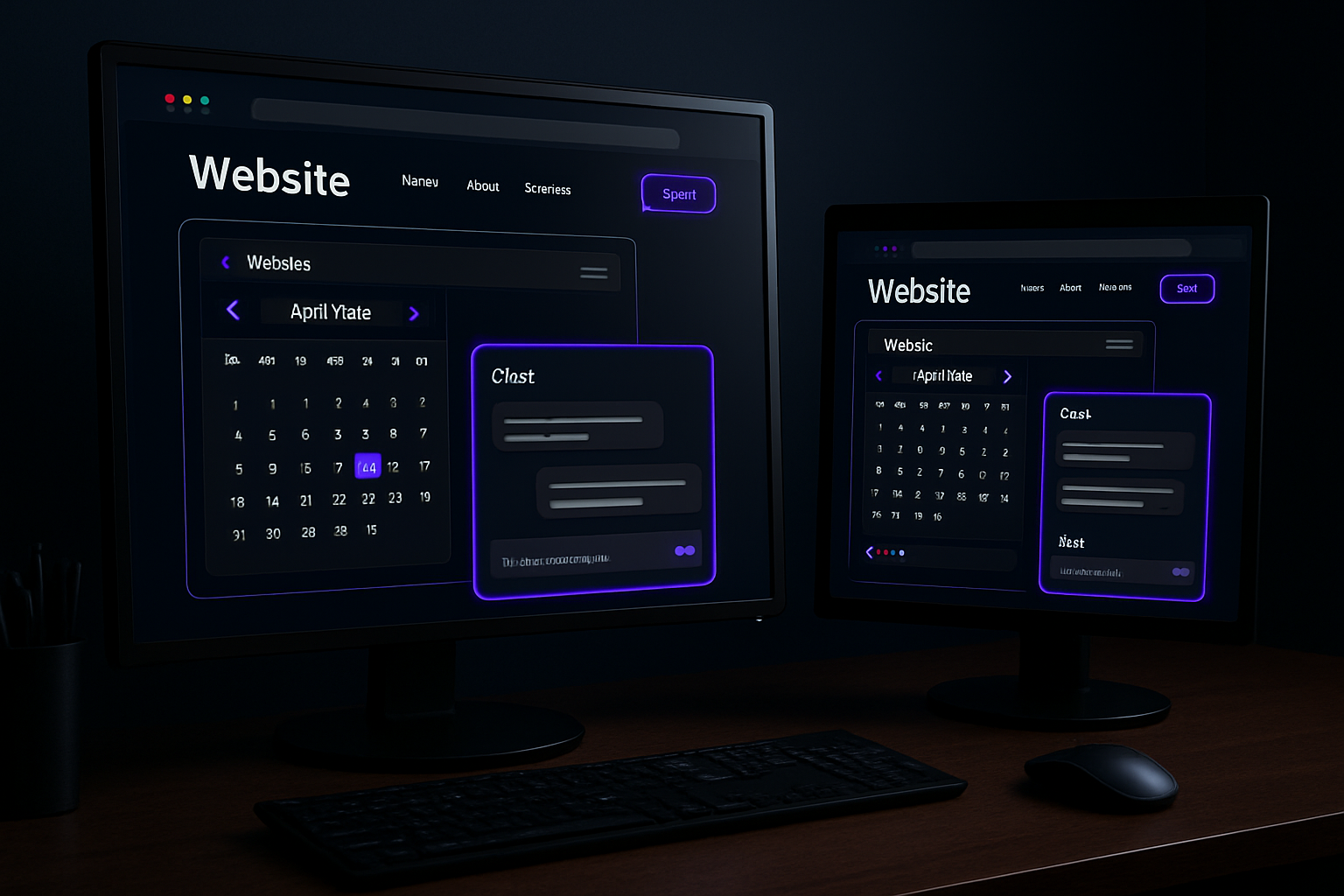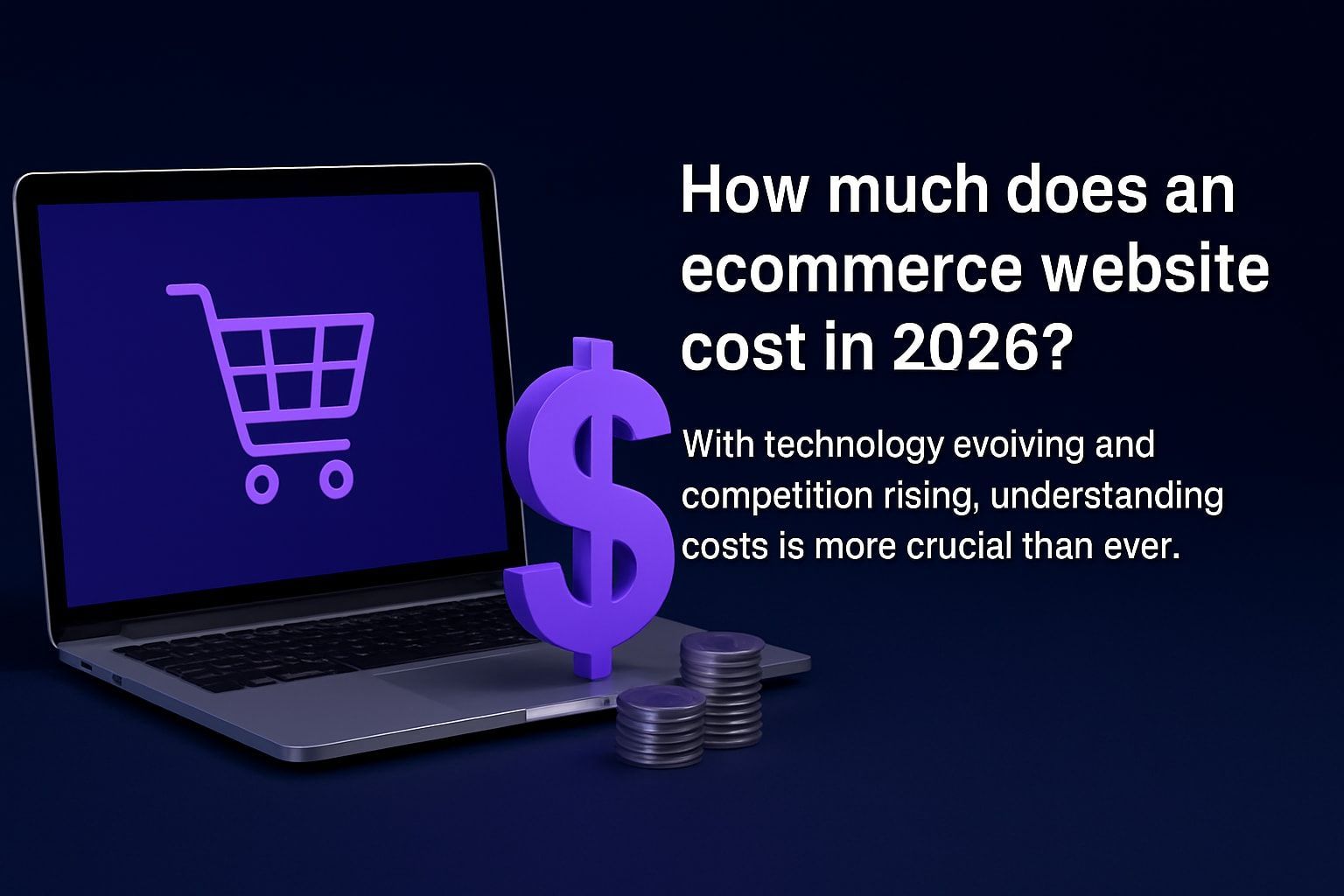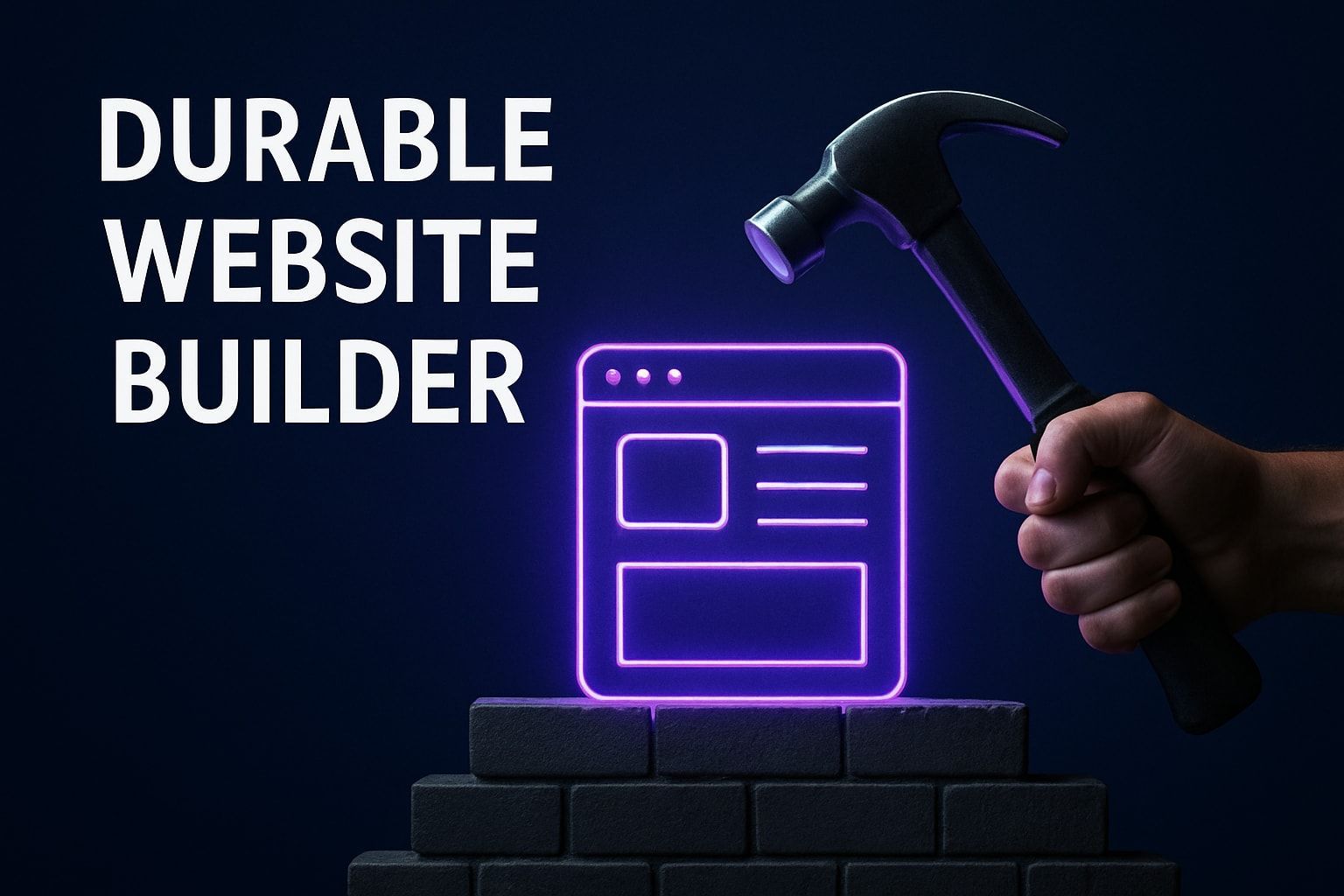How to Put a Website Inside Website: A Complete Guide (2025)
Imagine being able to display a fully interactive website within another website, opening up new ways to engage your audience and enhance user experience. The concept of website inside website is transforming how businesses, creators, and developers think about content, interactivity, and seamless integration.
In this complete guide, you'll discover exactly how to embed a website inside website using the latest methods and technologies for 2025. We'll explore real-world examples, practical use cases, and step-by-step instructions, while also covering important security, SEO, and performance considerations.
Ready to unlock powerful new possibilities for your site? Let’s dive in and learn how to make your web projects more dynamic and interactive than ever before.
Understanding the Concept: What Does “Website Inside Website” Mean?
Have you ever wondered what it really means to have a website inside website? This concept is more than just a buzzword—it's a modern approach to integrating content, tools, or even entire web applications from one site directly into another.
At its core, website inside website refers to the practice of embedding one website's features, pages, or interactive elements within a separate host site. Common terminology includes "embedding," "iframe," "web portal," and "widget." Each term describes a method of displaying external content seamlessly within your own digital environment.

Popular Use Cases & Historical Evolution
The website inside website approach unlocks a world of possibilities. Businesses often embed third-party tools like booking systems, chatbots, or analytics dashboards. Creatives display portfolios from platforms such as Behance or Dribbble. News organizations aggregate content from multiple sources, while educators integrate interactive assignments or video lessons.
Historically, the idea started with simple HTML frames. These early solutions allowed basic content sharing but often lacked flexibility and security. Over time, developers adopted more dynamic and secure methods, making embedding a website inside website smoother and more reliable.
Types of Embedding & Real-World Examples
There are several ways to achieve a website inside website experience:
- Inline frames (iframes): The most common method, iframes allow you to display another website within a defined area of your page.
- JavaScript widgets: Often used for interactive features like live chats or social media feeds.
- Server-side includes: These let you pull content from another site at the server level.
- API-driven integrations: For dynamic content, APIs fetch and render data directly in your layout.
Consider real-world examples:
- News aggregators pull headlines from external sources.
- SaaS products embed dashboards, calendars, or forms for seamless workflows.
- Retailers showcase product listings from external partners, as illustrated in eCommerce website integration examples.
Here's a quick comparison:
| Method | Use Case Example | Flexibility | Security |
|---|---|---|---|
| Iframe | Embed YouTube video | Medium | Medium |
| JS Widget | Chatbot integration | High | High |
| Server Include | Static content sharing | Low | High |
| API | Custom dashboards | Very High | High |
Market Data, Benefits, and Challenges
Recent statistics show that over 60% of top websites now use some form of embedded content. This widespread adoption of website inside website strategies is driven by tangible benefits:
- Enhanced interactivity for users
- Streamlined workflows across platforms
- Increased engagement and conversion rates
However, embedding a website inside website isn't without pitfalls. Site owners must consider cross-domain restrictions, loading speed, and potential security risks. Issues like slow performance or vulnerabilities from third-party content can impact both user experience and trust.
Understanding these fundamentals helps you make informed decisions about when and how to implement website inside website solutions for your own projects.
Core Technologies and Methods for Embedding Websites
Embedding a website inside website has evolved into a sophisticated practice, blending traditional web standards with cutting-edge frameworks. Whether you want to showcase a SaaS dashboard, display interactive forms, or integrate multimedia, understanding the core technologies is essential.

Comparing Embedding Methods
There are several ways to achieve a website inside website setup, each with its own strengths and ideal use cases. Here’s a quick comparison:
| Method | Use Case | Pros | Cons |
|---|---|---|---|
| <iframe> | General embedding | Simple, widely supported | Security, cross-domain issues |
| <object> / <embed> | Multimedia, PDFs, legacy content | Flexible content types | Limited interactivity |
| JavaScript SDK/widget | Third-party tools, chat, forms | Dynamic, customizable | Can be heavy, script conflicts |
| Web Components | Modern, modular apps | Encapsulation, reuse | Browser support, complexity |
| API-driven (REST/GraphQL) | Dynamic content, dashboards | Real-time, flexible | Requires development |
Each technique for website inside website should be selected based on your project’s technical and business needs.
Deep Dive: Iframes and Object/Embed Tags
The
<iframe>
tag remains a staple for embedding a website inside website. Its syntax is straightforward:
<iframe src="https://example.com" width="600" height="400" sandbox="allow-scripts allow-same-origin"></iframe>
Key attributes include:
-
sandboxfor restricting actions inside the frame -
srcdocfor inline HTML -
seamless(deprecated, but sometimes supported)
Object and embed tags let you include media, documents, or legacy content. However, these are less interactive than iframes and are generally reserved for specialized needs.
Modern browsers support iframes robustly, but always check for compatibility and test across devices to ensure your website inside website integration works smoothly.
JavaScript Frameworks and Web Components
Today, many developers prefer embedding content using frameworks like React or Vue. React Portals and Vue components enable seamless integration of external content, allowing for dynamic updates and advanced interactivity within your website inside website.
Web Components, built on standards like Shadow DOM and custom elements, offer modular, reusable components for embedding. They excel in large-scale applications and design systems, ensuring encapsulation and consistent behavior.
API-Based Embedding and Widgets
For real-time data and dynamic dashboards, API-driven embedding is ideal. By fetching content from REST or GraphQL endpoints, you can render live data without full page reloads. This approach is popular for analytics, CRM panels, and internal tools.
Third-party widget providers, such as chatbots or booking systems, often supply JavaScript snippets for seamless website inside website integration. These widgets make it easy to add powerful features with minimal coding.
Security and Performance Considerations
Security is crucial when embedding a website inside website. If using iframes, be mindful of vulnerabilities like clickjacking and cross-site scripting. Always use
X-Frame-Options
and configure a strict Content Security Policy (CSP). For a deeper look at the risks and best practices, see this overview of
security risks of iframes.
Performance should not be overlooked. Optimize by lazy loading embeds, deferring scripts, and minimizing resource usage. Responsive design is essential to ensure your embedded content looks great on all devices.
Practical Example: Embedding a Google Calendar
Let’s walk through a practical example of website inside website embedding using Google Calendar:
<iframe src="https://calendar.google.com/calendar/embed?src=your_calendar_id"
style="border:0" width="800" height="600" frameborder="0" scrolling="no"></iframe>
Adjust width, height, and styles for your layout. Always check the source site’s policies and headers to confirm embedding is allowed.
By mastering these technologies and methods, you can unlock new possibilities for interactive, integrated experiences on your website inside website.
Step-by-Step Guide: How to Embed a Website Inside Another Website
Embedding a website inside website elements is a powerful way to boost interactivity, streamline user experience, and enhance engagement. This step-by-step guide walks you through the entire process, from planning your goals to advanced customizations. Whether you’re integrating a live dashboard, showcasing a portfolio, or adding third-party functionality, each step is designed to help you succeed.

Step 1: Define Your Embedding Goals and Use Case
Before embedding a website inside website content, clarify the purpose behind your integration. Are you looking to display external resources, integrate interactive tools, or simply enhance your site’s functionality?
Consider the following:
- User Experience: Do users need to interact with the embedded content, or is it purely informational?
- Branding: Will the embedded site match your design, or do you need to customize its appearance?
- Mobile Responsiveness: Is the content optimized for all devices?
- Compliance: Who owns the embedded content, and are there any licensing or privacy concerns?
F
or example, embedding a customer support chat widget can provide instant help, but you must ensure it aligns with your branding and privacy policies.
Think about how embedding a website inside website pages could impact site speed, user trust, and workflow. List your top priorities, such as seamless integration, minimal load time, and consistent design.
By setting clear goals, you’ll be able to choose the best method and avoid common pitfalls. This strategic approach lays the foundation for a successful website inside website experience.
Step 2: Choose the Right Embedding Technology
Selecting the ideal technology is crucial for embedding a website inside website environments. The main contenders include iframes, JavaScript embeds, and API integrations, each with distinct pros and cons.
Here’s a quick comparison:
| Technology | Pros | Cons | Best Use Case |
|---|---|---|---|
| Iframe | Simple, widely supported | Limited customization, security | External sites, forms, videos |
| JavaScript | Flexible, dynamic | May impact speed, complexity | Widgets, analytics, chat |
| API Integration | Full control, scalable | Requires coding, maintenance | Custom dashboards, SaaS tools |
If you’re using a CMS or website builder, check compatibility with your platform. Some offer built-in modules for embedding a website inside website sections. Consider SEO and accessibility—iframes, for instance, may not be indexed by search engines, while API-driven content can be more SEO-friendly.
Choose the method that aligns with your goals, technical skill, and ongoing maintenance needs. For a SaaS dashboard, you might opt for a React component over a basic iframe for better interactivity.
Step 3: Obtain the Embed Code or Source URL
To embed a website inside website content, you’ll need the correct embed code or source URL. Many popular platforms, like YouTube and Google Maps, provide official embed codes. Locate these by clicking the “Share” or “Embed” option on the site you want to integrate.
If you’re embedding proprietary content, generate a custom snippet. Always verify that the source allows embedding by checking for headers like
X-Frame-Options
or Content Security Policy (CSP) settings. If embedding is restricted, request permission from the content owner or use alternative integration methods.
Here’s a sample iframe code for basic embedding:
<iframe src="https://example.com" width="600" height="400" frameborder="0" allowfullscreen></iframe>
For social plugins, such as Facebook’s Page Plugin, use the generator to customize your embed, then copy the code.
Always double-check the embed code for accuracy and security before proceeding. This ensures your website inside website integration works smoothly and securely.
Step 4: Implement the Embed on Your Website
Once you have your embed code, it’s time to place the website inside website framework on your site. Insert the code into your HTML, or use your CMS’s editor. For platforms like WordPress, add a Custom HTML block; in Wix or Shopify, use their built-in modules.
Adjust the embed’s width, height, and responsiveness to fit your layout. Use attributes like
sandbox
and
allowfullscreen
for iframes to enhance security. If you’re looking for inspiration or a head start, explore
Website templates for embedding to streamline your implementation.
Troubleshooting tips:
- Blank frames? Check for mixed content issues (HTTP vs HTTPS).
- Content not loading? Review CSP and X-Frame-Options on the source.
- Layout problems? Adjust CSS or use responsive containers.
Here’s a sample responsive embed code:
<div style="position:relative;padding-bottom:56.25%;height:0;overflow:hidden;">
<iframe src="https://example.com" style="position:absolute;top:0;left:0;width:100%;height:100%;" frameborder="0" allowfullscreen></iframe>
</div>
Testing your website inside website integration at this stage is vital for a seamless user experience.
Step 5: Test, Optimize, and Monitor Performance
After embedding a website inside website content, thorough testing ensures everything functions as intended. Check the embedded element across multiple browsers and devices. Pay attention to loading times—slow embeds can frustrate users.
Monitor resource usage and optimize by:
- Enabling lazy loading for embeds
- Compressing images and scripts
- Reducing unnecessary third-party calls
Accessibility is key. Add ARIA labels and ensure keyboard navigation works within the embedded content. Use tools like Google Lighthouse to assess performance impact and identify issues.
Regularly update your embed codes and content to stay compatible with source changes. This proactive approach keeps your website inside website integration running smoothly and efficiently.
Step 6: Advanced Techniques and Customizations
Ready to take your website inside website project to the next level? Advanced techniques can supercharge your integration.
Use JavaScript to dynamically resize iframes or conditionally load embeds based on user actions. For secure or private content, integrate authentication mechanisms like OAuth or tokens.
Styling is another area for customization. Use CSS to match the embedded site with your branding. For cross-domain communication, leverage the
postMessage
API to enable real-time data exchange between your site and the embedded content.
Example: Embedding a private analytics dashboard requires secure authentication and responsive design. With these advanced techniques, your website inside website solution becomes more flexible, interactive, and secure—tailored perfectly to your users’ needs.
Security, Privacy, and Compliance Considerations
When you embed a website inside website, you open up both opportunities and unique security challenges. Attackers may target your site using embedded content as an entry point. Common threats include clickjacking, where users are tricked into clicking invisible elements, and cross-site scripting (XSS), which can inject malicious scripts.
Data leaks can also occur if you display sensitive information from third-party sources. Embeds might expose your users to risks you never intended. That’s why understanding these vulnerabilities is crucial before you add a website inside website to your platform.

Common Security Risks with Website Inside Website Embeds
Embedding a website inside website brings several security risks you should never ignore.
- Clickjacking: Malicious overlays trick users into unintended actions.
- XSS Attacks: Embedded scripts can compromise user data.
- Data Leaks: Sensitive information may be exposed if not properly secured.
Each risk can affect your users and brand reputation. For example, a compromised third-party widget could leak customer details or infect visitors with malware. Always evaluate the trustworthiness of any site or tool you plan to embed within your website inside website strategy.
Essential Security Headers and Technical Protections
To protect your website inside website, implement robust HTTP security headers. These prevent unauthorized framing and script execution. Focus on:
| Header | Purpose |
|---|---|
| X-Frame-Options | Prevents clickjacking |
| Content-Security-Policy (CSP) | Restricts embedded content sources |
| Referrer-Policy | Controls referrer info sent |
X-Frame-Options: SAMEORIGIN
Content-Security-Policy: frame-ancestors 'self'
Referrer-Policy: no-referrer
Recent studies, such as this analysis of HTTP security headers, highlight the importance of configuring these protections correctly. Without them, your website inside website can become an easy target for attackers.
Privacy, Compliance, and User Consent
Any website inside website integration must comply with privacy laws like GDPR and CCPA. If your embed collects or processes user data, you are responsible for informing users and obtaining consent.
- Use clear cookie banners for third-party content.
- Limit data sharing to only what’s necessary.
- Document all data flows from embedded elements.
Neglecting privacy compliance can lead to heavy fines and loss of user trust. Make transparency a core part of your website inside website approach.
Best Practices and Real-World Lessons
Learning from past incidents helps future-proof your website inside website strategy. Some high-profile breaches stemmed from insecure embeds, highlighting the need for vigilance.
Adopt these best practices:
- Regularly audit all embedded content and code.
- Use vulnerability scanning tools.
- Educate your team about risks and mitigation.
By treating your website inside website like any other critical system, you reduce the chances of costly mistakes. Secure, compliant embedding ensures a smooth experience for everyone.
SEO and Performance Implications of Embedding Websites
Embedding a website inside website can open doors to richer content and interactive experiences. But how does this impact your SEO and site performance? Let’s break down what you need to know to keep your rankings and user experience strong.
Search Engine Treatment of Embedded Content
When you embed a website inside website, search engines like Google typically don’t crawl or index the content within an iframe or third-party widget as part of your page. This means that while users see the embedded material, search engines mostly ignore it for ranking your own page.
However, some JavaScript embeds or API-driven integrations may allow more crawlability if they render content directly in the DOM. Always check how your embedding method behaves. If SEO is a concern, avoid relying solely on iframes for critical content. Instead, provide supporting text or structured data to help search engines understand the value your website inside website brings to users.
Performance and Core Web Vitals Impact
Performance is crucial when adding a website inside website. Embedded content can slow down your page, increasing load times and potentially harming your Core Web Vitals scores, such as Largest Contentful Paint (LCP) and Cumulative Layout Shift (CLS).
To minimize these impacts:
- Use lazy loading for embeds so they load only when needed.
- Optimize the size and number of embedded elements.
- Monitor performance with tools like Google Lighthouse.
If you embed interactive tools, check the resource usage. Studies show that sites with optimized embeds see up to 20% better engagement rates, as highlighted in Interactive content statistics 2024. Faster pages not only improve SEO but also keep users engaged longer.
SEO Best Practices for Embedding
Following best practices is key when adding a website inside website. Use the table below for a quick reference:
| Best Practice | Example/Tip |
|---|---|
| Lazy Loading | <iframe loading="lazy"> |
| Structured Data | Add schema.org markup for context |
| Avoid Duplicate Content | Don’t embed the same content on multiple pages |
| rel="nofollow" | <a href="..." rel="nofollow"> for untrusted links |
| robots.txt | Disallow indexing of embed-only pages |
For detailed strategies, check out these SEO best practices for embeds. Remember, always provide alternative content for accessibility and SEO value.
Engagement, Optimization, and Measurement
Embedding a website inside website can boost engagement, but tracking and optimizing is essential. Always test embeds on mobile devices to ensure responsiveness and fast loading. Use analytics to compare user behavior with and without embedded widgets.
A/B testing can reveal if your embedded content improves bounce rates or session duration. If you notice performance drops, consider conditional or asynchronous loading. Regular audits and updates help maintain both SEO health and a smooth user experience.
Advanced Use Cases and Future Trends in Website Embedding
Today, the concept of a website inside website has evolved beyond basic integrations. Businesses and developers are leveraging this technique for much more than just displaying static content. The landscape is rapidly shifting, opening doors for advanced solutions that drive engagement and efficiency.
Enterprise Portals and Multi-Site Dashboards
Large organizations now use website inside website strategies to unify information from multiple sources. Multi-site portals bring together analytics, HR dashboards, and reporting tools into a single, cohesive interface. This approach streamlines workflows and allows teams to interact with various systems without constant tab-switching.
For example, an enterprise might embed CRM, ticketing, and project management apps directly within its internal portal. This not only improves productivity but also creates a seamless user experience.
Embedding Interactive SaaS Tools and Apps
The website inside website model is perfect for integrating booking platforms, CRM systems, or event management tools. Imagine adding a booking calendar or live chat system directly into your site—users interact without ever leaving your page.
More advanced use cases include eCommerce stores embedding third-party product configurators or payment gateways. This method increases engagement and reduces friction during the customer journey.
No-Code, Low-Code, and Composable Architectures
No-code and low-code platforms make embedding easier than ever. With drag-and-drop interfaces, even non-developers can implement a website inside website setup. These solutions are popular for quickly adding forms, surveys, or interactive widgets.
Headless CMS and composable architectures further empower teams to build modular experiences. Content and functionality are delivered via APIs, then embedded wherever needed. This flexibility is ideal for brands aiming to scale or personalize user journeys.
AI-Powered Personalization and Cross-Platform Embedding
Artificial intelligence is transforming the website inside website experience. Embedded AI assistants, recommendation engines, and chatbots offer real-time support and tailored content. For a deeper dive into these tools, check out AI assistant integration tools to see how businesses are using AI to boost engagement.
Progressive Web Apps (PWAs) and cross-platform solutions ensure these embedded experiences work flawlessly on any device. This is critical for modern users who expect consistency whether they're on desktop, tablet, or mobile.
Future Trends and Predictions for 2025
Looking ahead, the website inside website trend will only accelerate. Expect to see tighter security, dynamic integrations, and even more personalized experiences. Industry data, such as the insights found in Web design statistics 2025, reveal that user demand for interactive, embedded content is at an all-time high.
One compelling example is embedding a live event platform within a corporate intranet. Employees can access real-time streams, chat, and resources—all without navigating away from their secure environment.
Summary Table: Advanced Website Embedding Use Cases
| Use Case | Description | Benefit |
|---|---|---|
| Multi-site Dashboards | Unified access to multiple tools | Streamlined workflows |
| Interactive SaaS Integrations | Booking, CRM, or event apps embedded | Enhanced engagement |
| No-Code/Low-Code Widgets | Drag-and-drop forms, surveys | Quick implementation |
| AI Personalization | Embedded chatbots, recommendations | Real-time support |
| PWAs and Cross-Platform Embedding | Consistent experience on all devices | Broader reach |
| Live Event Platforms in Intranets | Real-time streaming and resources | Secure, interactive access |
The website inside website approach is no longer just a technical novelty—it's a strategic advantage. By embracing these advanced use cases and staying ahead of trends, you can deliver richer, more engaging experiences for your users.
Now that you know how embedding a website within another can spark new ideas and elevate user experience, why not put those insights into action? With Avantiy’s AI-powered website builder, you don’t need to be a tech wiz to create interactive, seamless, and professional-looking sites—no coding required. Whether you want to showcase a portfolio, integrate powerful tools, or launch an online store, you have everything you need right at your fingertips. Ready to turn your ideas into reality?
Start Building Your Website Today and see how easy it is to bring your vision to life!
Start building your new website today
No credit of debit card required start building today




